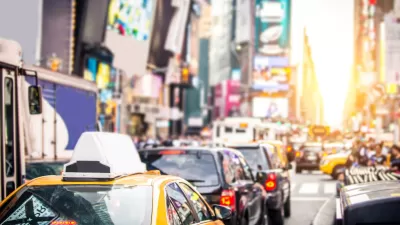With average rents $2,800 more than the rest of the country, and the average home costing $1.46 million, it's increasingly difficult for the non-wealthy to live in Manhattan. Amy O'Leary goes in search of the borough's vanishing middle class.
"In a city like New York, where everything is superlative, who exactly is middle class? What kind of salary are we talking about? Where does a middle-class person live? And could the relentless rise in real estate prices push the middle class to extinction?"
These are the questions that drive O'Leary in her search for what defines "middle class" among Manhattan's 1.6 million residents, in what is "probably the only place in the United States where a $5.5 million condo with a teak closet and mother-of-pearl wall tile shares a block with a public housing project."
"The average Manhattan apartment, at $3,973 a month, costs almost $2,800 more than the average rental nationwide. The average sale price of a home in Manhattan last year was $1.46 million, according to a recent Douglas Elliman report, while the average sale price for a new home in the United States was just under $230,000. The middle class makes up a smaller proportion of the population in New York than elsewhere in the nation."
"And yet the middle class stubbornly hangs on," says O'Leary, "trading economic pain for the emotional gain of hot restaurants, the and the feeling of being in the center of everything. The price tag for life’s basic necessities — everything from milk to haircuts to to electricity, and especially housing — is more than twice the national average."
O'Leary considers the definition of “middle class” through five different lenses: Income, Profession, Household Size, Length of Residence, and Values.
FULL STORY: What Is Middle Class in Manhattan?

Alabama: Trump Terminates Settlements for Black Communities Harmed By Raw Sewage
Trump deemed the landmark civil rights agreement “illegal DEI and environmental justice policy.”

Planetizen Federal Action Tracker
A weekly monitor of how Trump’s orders and actions are impacting planners and planning in America.

Why Should We Subsidize Public Transportation?
Many public transit agencies face financial stress due to rising costs, declining fare revenue, and declining subsidies. Transit advocates must provide a strong business case for increasing public transit funding.

Understanding Road Diets
An explainer from Momentum highlights the advantages of reducing vehicle lanes in favor of more bike, transit, and pedestrian infrastructure.

New California Law Regulates Warehouse Pollution
A new law tightens building and emissions regulations for large distribution warehouses to mitigate air pollution and traffic in surrounding communities.

Phoenix Announces Opening Date for Light Rail Extension
The South Central extension will connect South Phoenix to downtown and other major hubs starting on June 7.
Urban Design for Planners 1: Software Tools
This six-course series explores essential urban design concepts using open source software and equips planners with the tools they need to participate fully in the urban design process.
Planning for Universal Design
Learn the tools for implementing Universal Design in planning regulations.
Caltrans
Smith Gee Studio
Institute for Housing and Urban Development Studies (IHS)
City of Grandview
Harvard GSD Executive Education
Toledo-Lucas County Plan Commissions
Salt Lake City
NYU Wagner Graduate School of Public Service





























